Camera Comparison: iPhone 5s vs LG G2, Samsung Galaxy Note 3, Galaxy S4, HTC One, Motorola Moto X, DROID Ultra
You can now read:
- Sony Xperia Z1 Compact vs Xperia Z1 vs LG G2 vs iPhone 5s vs Samsung Galaxy S4 vs HTC One Camera comparison
- HTC One (M8) vs Samsung Galaxy S4 vs Galaxy Note 3 vs iPhone 5s vs LG G2 vs Nexus 5 vs Nokia Lumia 1520 vs Sony Xperia Z1S Camera comparison
- Samsung Galaxy S5 vs HTC One (M8) vs Galaxy S4 vs iPhone 5s vs LG G2 vs Nexus 5 vs Sony Xperia Z1 Camera comparison
- Huawei Ascend P7 vs Oppo Find 7a vs Samsung Galaxy S5 vs LG G2 vs iPhone 5s vs HTC One (M8) vs Sony Xperia Z1 Camera comparison
- Sony Xperia Z2 vs Samsung Galaxy S5 vs LG G2 vs HTC One (M8) vs iPhone 5s Camera comparison
Introduction
The iPhone 5s is a smartphone that is in many ways better than its predecessor, and one of the upgrades it brings along is the improved 8MP camera. Yup, the resolution hasn't been boosted, but other aspects of the snapper itself have been tweaked, including those larger, 1.5-micron pixels and that wider, f/2.2 aperture. As a result, the camera should perform better, especially in low light situations. However, are the photographic skills of the iPhone 5s on par with those of the competition? Well, that's what we're here to find out.
For today's camera comparison, we have chosen to stack up Apple's finest against some of the top smartphones out there. Among them is the LG G2, which has already proven itself as a very capable shooter with its 13MP OIS camera, grabbing the first prize in our previous challenge. Of course, Samsung's best handsets, namely the Galaxy S4 and the Galaxy Note 3, are also in the game and will defend the company's reputation with their 13MP cameras. And to make things even more interesting, we've brought along the HTC One with a 4MP, optically stabilized UltraPixel camera, as well as the Motorola MOTO X and the Motorola DROID Ultra, both packing 10MP Clear Pixel cameras. So yeah, the fight will be pretty tough. Let's get straight into it!
Note: the Panasonic Lumix GH2 is used as a reference camera.
Details
Thankfully, the weather and lighting conditions during our testing were favorable, allowing all of the smartphones to present us with the best results they could achieve. And the ones that gave us the best impression were the LG G2 and the Samsung Galaxy S4, which packed tons of details in their photos. They weren't leading by miles, however.
Daytime photos taken with the LG G2 and Samsung Galaxy S4 look great even at 100% zoom, so we can comfortably examine even the fine details in them, such as the leaves on trees or the license plates of passing cars. The iPhone 5s and the Galaxy Note 3 photos look very detailed as well, but still, they are a step behind the G2 and the S4. Also, we see that, as usual, the iPhone's photos are noisier than what we're used to seeing.
Photos taken with the Motorola MOTO X, DROID Ultra, and HTC One are usable, but their detail levels are average at best. Nevertheless, the images they produce are perfectly suitable for uploading to a social network and even making small prints.
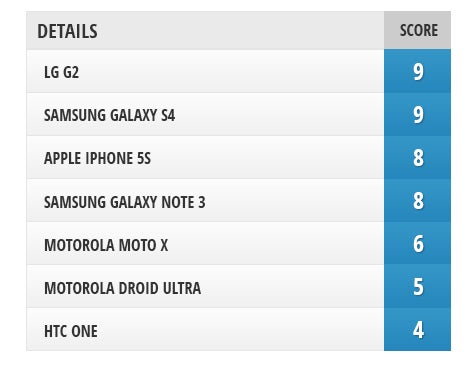
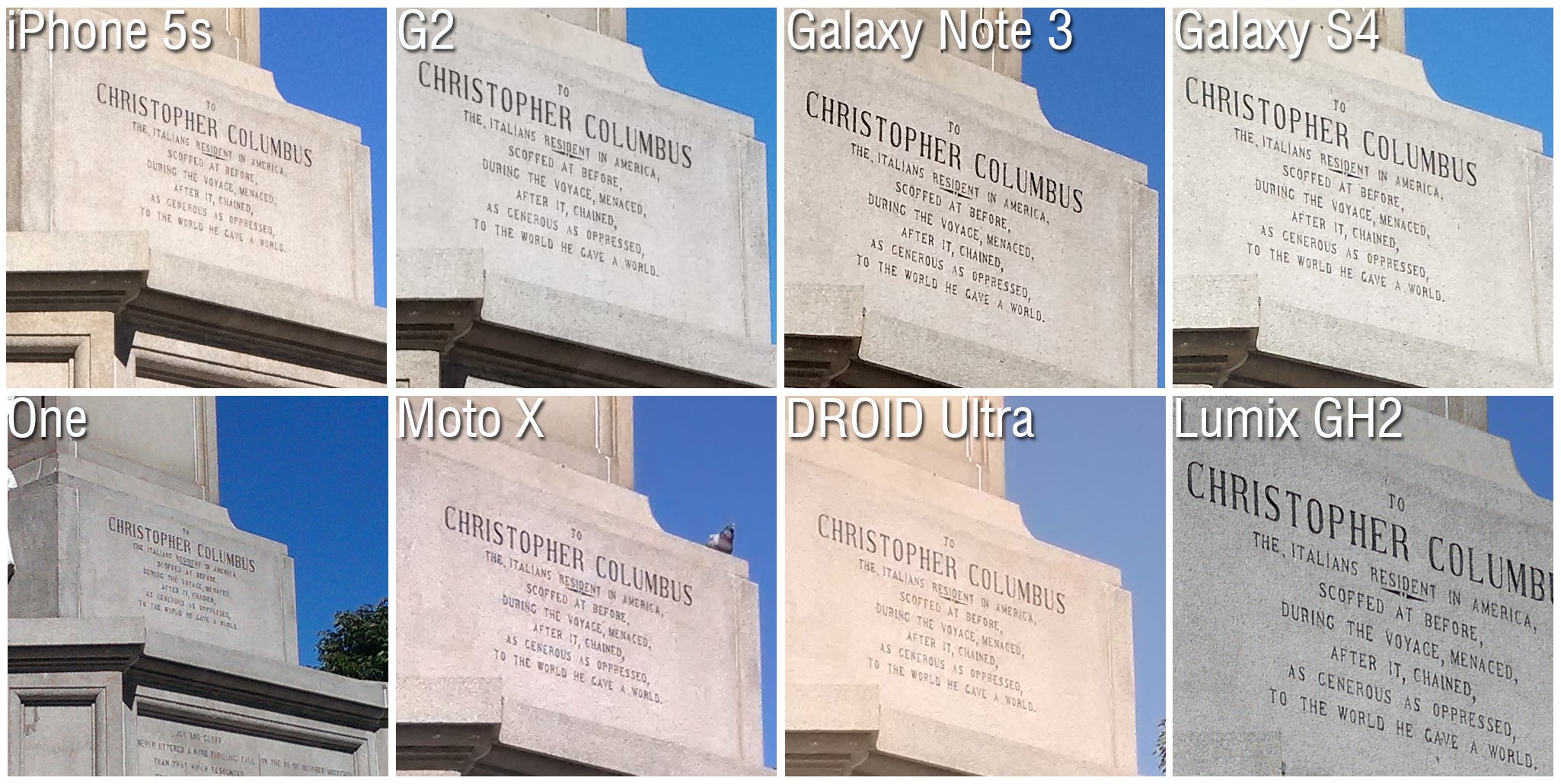
100% crop
Color Representation
To be honest, not a single one of these phones managed to represent colors as flawlessly as we wanted, yet some of them did get closer to that point than others. Overall, the Samsung Galaxy S4 delivered the best results. Sure, it might have a tendency to boost color saturation a bit, but that's a trait we see quite often with smartphone cameras. The fact of the matter is that this boost with the Galaxy S4 is very slight and doesn't hurt the image's appearance.
The Samsung Galaxy Note 3 and the LG G2 also did very well in this category, producing photos that looked close in terms of color representation to the ones made with our reference camera. As for the iPhone 5s, it makes colors appear a bit warmer and more saturated than they actually are. Same can be said about the HTC One's camera. Last on the list are the Motorola MOTO X and the Motorola DROUD Ultra – their photos look okay, but their color accuracy leaves room for improvement.
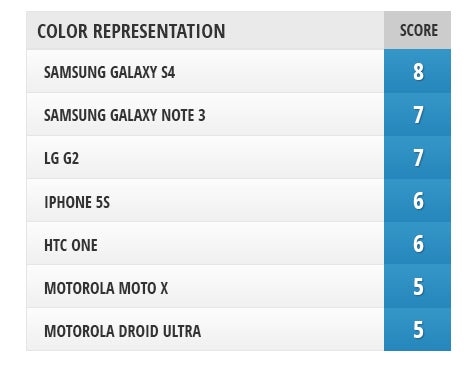
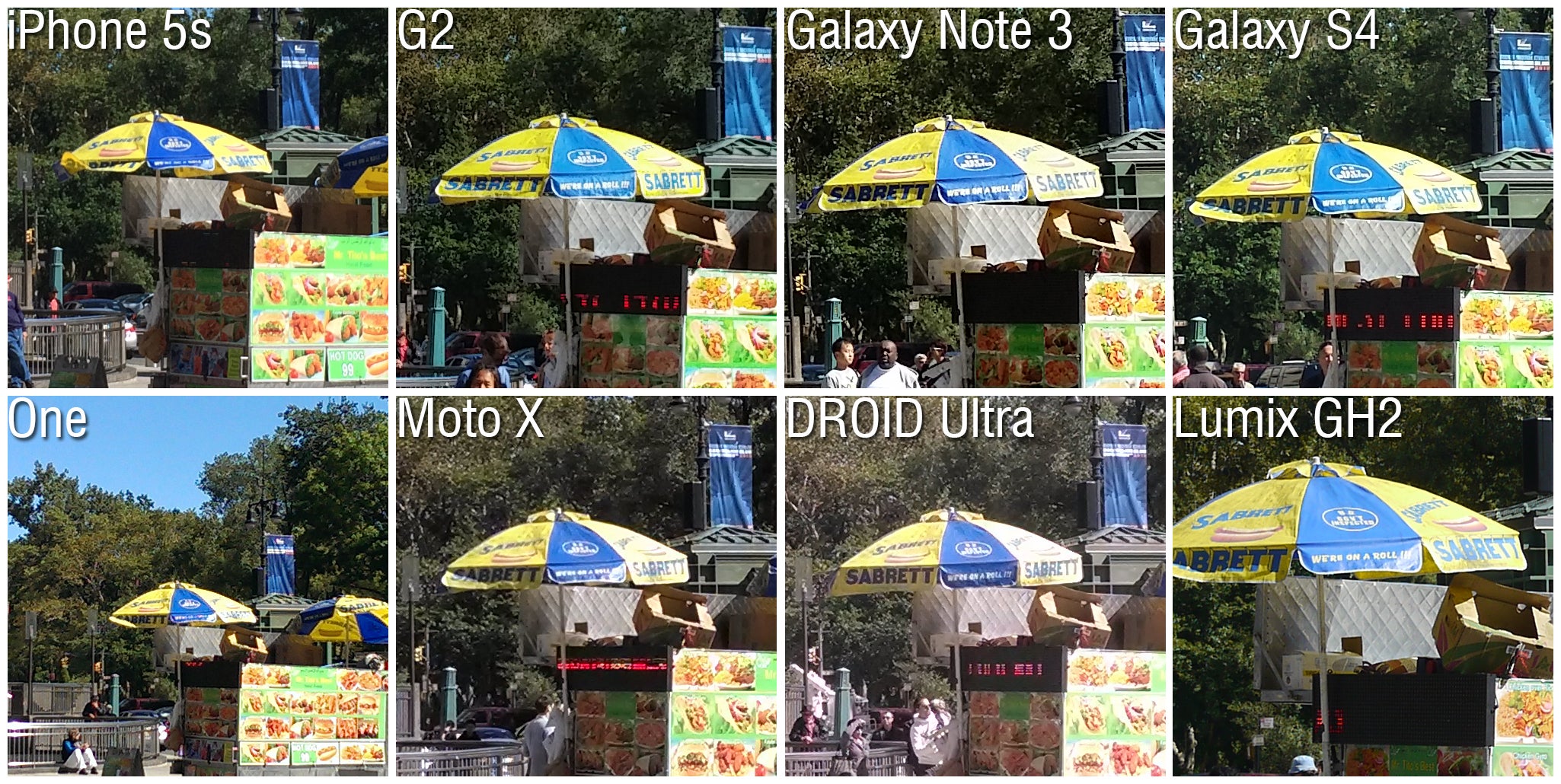
100% crop
Macro and Close-ups
Most of today's smartphones are perfectly capable of taking great macro shots if given enough light. Therefore, the participants in our comparison should excel in this category. And sure enough, not a single one of them disappointed us with their close-ups, the best of the bunch being the iPhone 5s. Its macros are very clear and well exposed, producing lots of fine detail. Next up come the LG G2, Galaxy S4 and the Galaxy Note 3, which produce close-ups that are almost as good as the iPhone's. The Motorola DROID Ultra, MOTO X, and the HTC One leave something to be desired out of their macro shots, but we're still happy with their results.
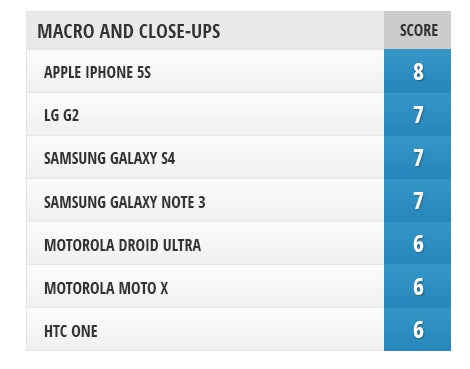
Indoor
Here's where it gets a bit more challenging. There's less light available indoors, which makes it harder for any smartphone to take a clear, good-looking photo. Yet in most cases, the LG G2 managed to snap a pretty picture, free of motion blur and with little of that annoying digital noise. The indoor photos by the iPhone 5s are noisier, but still very detailed and definitely of good quality. The Samsung Galaxy Note 3 and Galaxy S4 take nice indoor photos as well, although in some instances, they do allow for some motion blur caused by the movement of the user's hand to spoil the frame. The HTC One produces indoor photos with very awkward colors, although we must admit that it is the best phone for taking a photo of a person in these non-optimal lighting conditions. Trailing behind are the Motorola MOTO X and DROID Ultra, producing indoor photos with lots of digital noise and artifacts present in them.
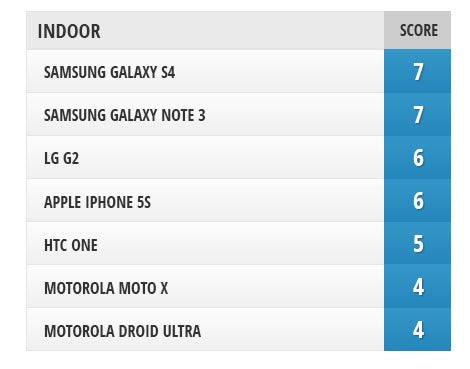
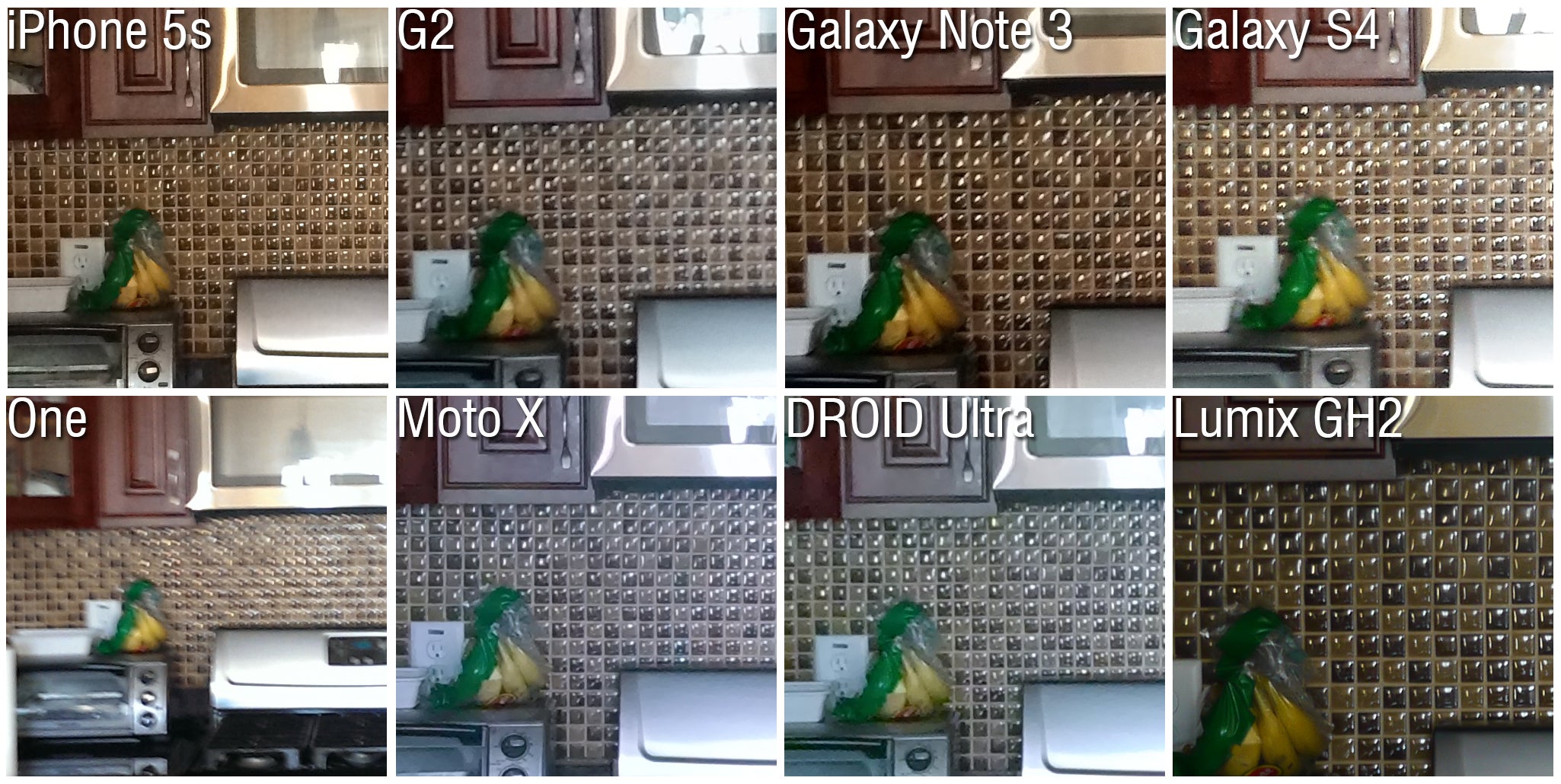
100% crop
Night
Well, what do you know: the iPhone 5s can actually take some pretty decent night photos. Despite all the digital noise present in them, they are the clearest, most detailed, and most usable overall compared to the shots taken with the rest of the gang. Second place goes to the LG G2, which is still a very decent low-light performer, but its photos are somewhat blurred and low on detail. The HTC One can also take passable night shots, as long as you have a steady hand. Motorola's MOTO X and DROID Ultra leave a lot to be desired as their night shots look heavily distorted. Surprisingly, the Samsung Galaxy Note 3 and Galaxy S4 didn't fare well in the night test, producing pretty much unusable photos.
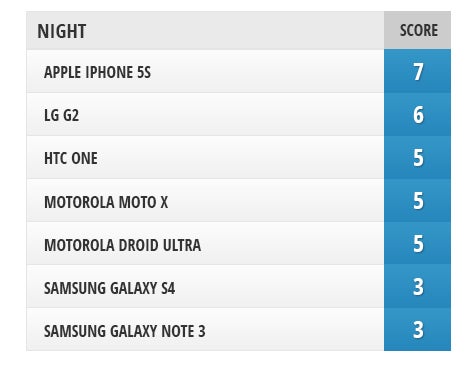
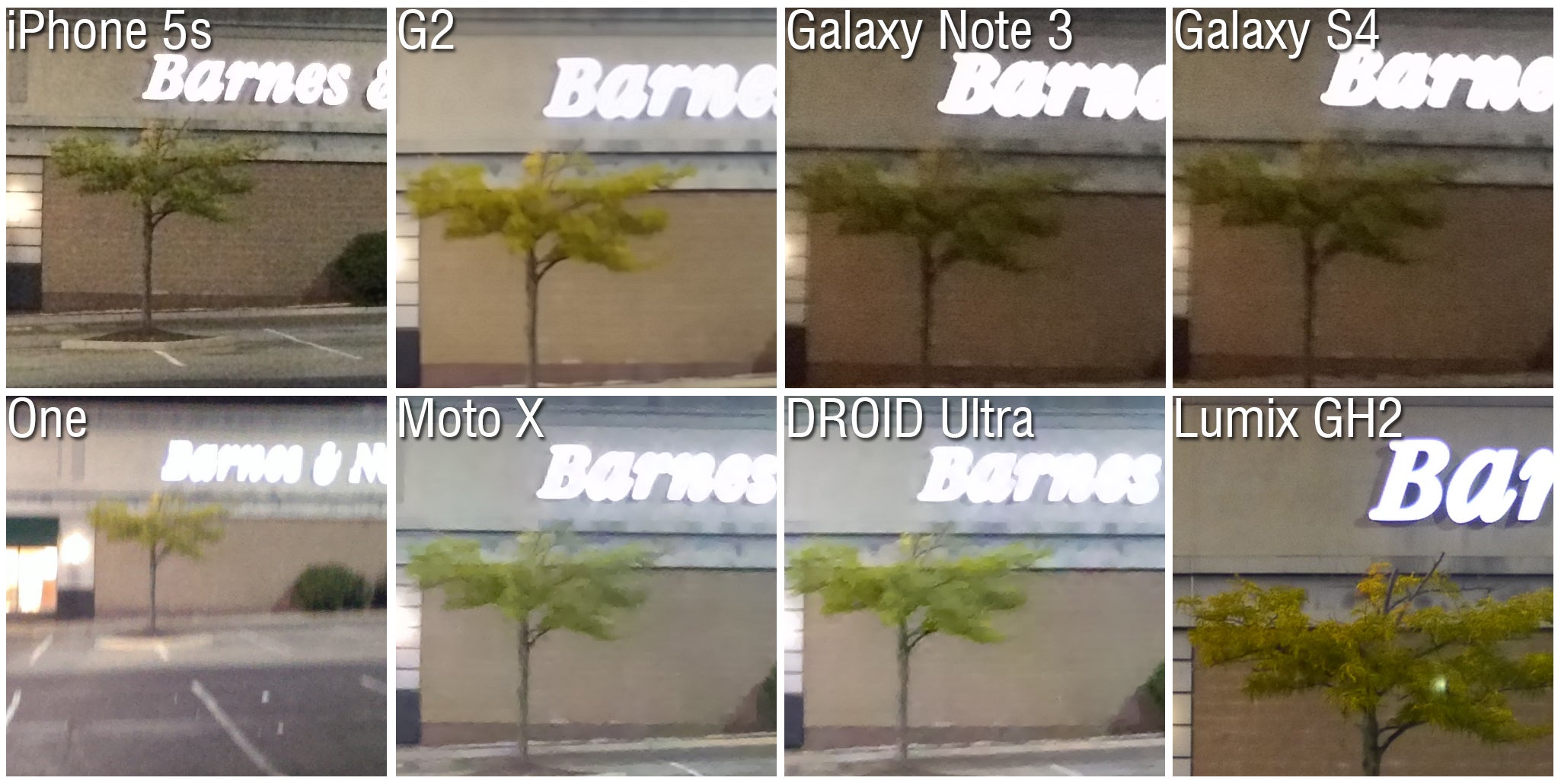
100% crop
Video
We don't even have to think twice about it – when it comes to recording videos, we'd take the LG G2 any day. Its Full HD 60fps video looks outstanding, especially when its optical image stabilization keeps the fluidly moving frames so steady. Yet the iPhone 5s deserves to share the top spot with LG's flagship because it takes pretty good videos at night. In fact, no other smartphone among the bunch managed to produce night footage as clear as the iPhone's. If given enough light, the Galaxy Note 3, Galaxy S4, HTC One, Motorola DROID Ultra and MOTO X can also record very detailed and very stable 1080p video.
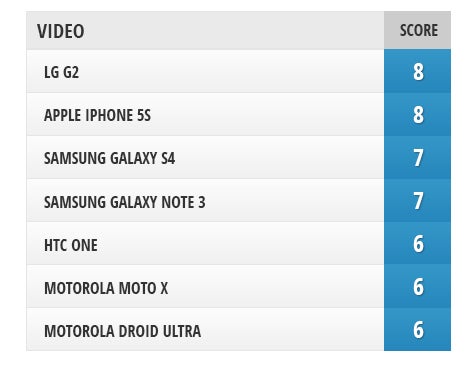
Interface and ease of use
This comparison would be incomplete if we omit mentioning what taking photos with them actually feels like. That's because each phone's camera UI and features affect its ease of use.
Thankfully, the iPhone 5s excels in that respect. The handset itself is compact, easy to use and hold, while its volume button can be used as a shutter key. Furthermore, its camera interface is simple to use and quick to access via the dedicated lock screen shortcut. While there isn't much in terms of manual camera settings, the iPhone's camera app comes with a handful of neat features, including HDR, filters, burst mode, and a 120fps slow-motion video recording.
The LG G2 is also pretty comfortable to hold while taking landscape photos, although not as much as the iPhone 5s. Its camera app is packed with whole bunch of scenes and shooting modes to experiment with, including HDR, Burst Mode, Night Mode, and the outstanding 1080p/60fps video setting. All the menu settings are easy to get to, which is essential for switching modes on the fly. The only thing bothering us is that you have to manually switch between photo and video modes instead of having both shutters on the same screen, as the case is with the Galaxy S4 and the HTC One.
To no surprise, the Samsung Galaxy S4 and the Samsung Galaxy Note 3 share the same UI. Again, you get a whole ton of shooting scenes and modes, most of which can actually be quite useful given the appropriate conditions. We find it convenient that two separate shutters have been added – one for taking photos and another for recording videos – so there is no need to switch manually between modes as the case is with the G2. While the Galaxy S4 and Note 3 lack OIS, there is a software image stabilizer that works well, but its effect isn't as profound when compared to the G2 and its optical stabilization. With the Samsung Galaxy Note 3, you have the option to shoot video in slow-motion or in 4K resolution, which is definitely a neat stand-out feature.
There is no shortage of shooting scenes, modes, and options on the HTC One. It can take HDR photos and videos at 1080p resolution, 60 frame-per-second videos at 720p, all the while capturing stereo sound of fantastic quality. However, the UI hasn't been organized the best way possible. Most settings and adjustments are placed in a single list with lots of sub-menus, so getting to the one you need may take more steps than it should. Thankfully, the frequently used ones are placed on the very top of the list.
On the Motorola DROID Ultra and the Motorola MOTO X we see an interface that is very minimalist in nature, with none of those fancy filters or advanced camera effects. Swiping over to the right will pull over a dial on the left listing the modes and settings one is allowed to set: HDR, flash, tap to focus, slow motion video, panorama, geo-tag, and shutter tone. Quick Capture is also among them – it allows you to quickly launch the camera just by flipping the handset in your hand twice, although we did notice that this gesture didn't work all that well in some rare instances. There is also continuous burst shooting – all you have to do is to hold your finger on the screen.
Conclusion and overall score
While the camera on the iPhone 5s is not drastically better than the one found on its predecessor, it is still capable enough to rank Apple's smartphone among the best cameraphones out today. Throughout our testing, it constantly delivered outstanding results regardless of the shooting conditions, so it definitely deserves to hold the top spot in this comparison.
However, the iPhone 5s shares the gold with LG's flagship – the LG G2 – which proved that it is also a force to be reckoned with, beating Apple's smartphone in some tests, yet lagging slightly behind in others.
The Samsung Galaxy S4 gets the bronze, which is still a notable achievement given the fact that it has been on the market for about six months now. Even its compadre – the Samsung Galaxy Note 3 – couldn't outpace it, even though the latter demonstrated that its camera is definitely not to be underestimated.
The HTC One, Motorola MOTO X, and Motorola DROID Ultra all come with cameras that promise more than they can deliver. Sure, HTC's Ultrapixel technology and the Clear Pixel sensors used by Motorola's handsets may seem pretty cool on paper, but the results are a tad underwhelming, although still good enough for the needs of the casual photographer.

Disclaimer: The overall score for each phone represents its average rating. All categories have been taken into account with equal weight on the overall score.
You can now read:
- Sony Xperia Z1 Compact vs Xperia Z1 vs LG G2 vs iPhone 5s vs Samsung Galaxy S4 vs HTC One Camera comparison
- HTC One (M8) vs Samsung Galaxy S4 vs Galaxy Note 3 vs iPhone 5s vs LG G2 vs Nexus 5 vs Nokia Lumia 1520 vs Sony Xperia Z1S Camera comparison
- Samsung Galaxy S5 vs HTC One (M8) vs Galaxy S4 vs iPhone 5s vs LG G2 vs Nexus 5 vs Sony Xperia Z1 Camera comparison
- Huawei Ascend P7 vs Oppo Find 7a vs Samsung Galaxy S5 vs LG G2 vs iPhone 5s vs HTC One (M8) vs Sony Xperia Z1 Camera comparison
- Sony Xperia Z2 vs Samsung Galaxy S5 vs LG G2 vs HTC One (M8) vs iPhone 5s Camera comparison
Follow us on Google News
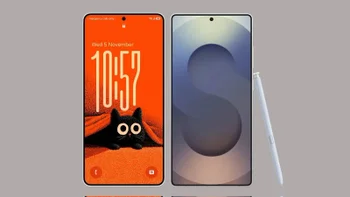



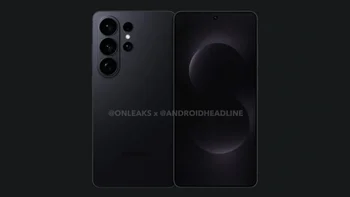
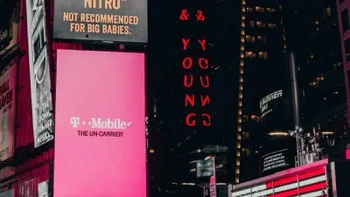






Things that are NOT allowed:
To help keep our community safe and free from spam, we apply temporary limits to newly created accounts: